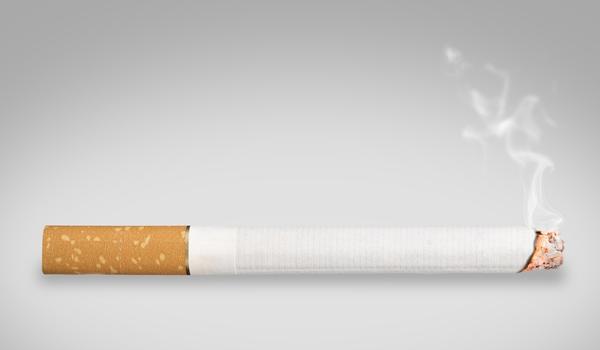If you’re a smoker, you may be wondering if you can bring cigarettes with you on a plane. The answer is yes, but there are certain regulations and restrictions you need to be aware of before packing your cigarettes in your luggage. In this blog post, we’ll go over everything you need to know about bringing cigarettes on a plane, including how many cigarettes you can bring, packaging and labeling requirements, and any penalties for breaking the rules.
How many cigarettes can you bring on a plane?
The number of cigarettes you can bring on a plane depends on whether you’re traveling domestically or internationally. For domestic flights within the United States, the Transportation Security Administration (TSA) allows you to bring up to 200 cigarettes in your checked baggage. If you’re carrying cigarettes in your carry-on bag, you’re limited to just one pack (20 cigarettes) per person.
When traveling internationally, the regulations vary depending on the country you’re visiting. For example, if you’re traveling to the United Kingdom, you’re allowed to bring in 800 cigarettes, 400 cigarillos, 200 cigars, or 1 kilogram of tobacco. However, if you’re traveling to Australia, the limit is just 50 cigarettes or 25 cigars, or 250 grams of tobacco.
It’s important to note that these regulations are subject to change and it’s always best to check with the specific country’s Customs and Border Protection (CBP) for the most up-to-date information.
Packaging and labeling requirements for cigarettes on a plane
When it comes to packaging and labeling your cigarettes for air travel, there are a few things you need to keep in mind. First, cigarettes must be stored in the original packaging or in a crush-proof container. This means that you can’t just toss a pack of cigarettes into your checked luggage or carry-on bag.
Additionally, if you’re storing cigarettes in checked baggage, they must be properly labeled. This includes providing a detailed list of the contents, the number of cigarettes, and your personal information. This is to ensure that your cigarettes are easily identifiable and can be quickly located by TSA officials if they need to inspect them.
Carrying cigarettes in your carry-on bag
As mentioned earlier, you’re limited to just one pack of cigarettes (20 cigarettes) when carrying cigarettes in your carry-on bag. This means that if you’re a heavy smoker and you’re planning on traveling for an extended period of time, you’ll need to plan accordingly and bring enough cigarettes to last the duration of your trip.
Additionally, it’s important to note that you can’t smoke cigarettes on the plane, even if you’re in a designated smoking section, so you’ll need to wait until you land to have a smoke.
Bringing cigarettes as a gift
If you’re planning on bringing cigarettes as a gift for someone else, there are a few things you need to keep in mind. First and foremost, you’ll need to abide by the same regulations and restrictions as if you were bringing cigarettes for your own personal use. This means that you’ll be limited to the number of cigarettes you can bring, and they must be properly packaged and labeled.
Additionally, if you’re bringing cigarettes as a gift on an international flight, you’ll need to be aware of the customs regulations of the country you’re visiting. Each country has its own rules and regulations regarding the import of cigarettes, so it’s important to check with the specific country’s Customs and Border Protection (CBP) for the most up-to-date information.
Failure to comply with these regulations can result in fines or penalties, and in some cases, your cigarettes may be confiscated. So, it’s best to be aware of the rules and regulations before gifting cigarettes to someone else on an international flight.
Consequences of breaking cigarette regulations on a plane
If you’re found to be breaking cigarette regulations while traveling, there can be serious consequences. If you’re caught bringing more cigarettes than allowed, or if your cigarettes are not properly packaged or labeled, you could face fines or penalties. Depending on the severity of the violation, your cigarettes may be confiscated, and in some cases, your travel may be restricted.
Additionally, if you’re found to be smoking on a plane, you may be subject to penalties and fines, and in some cases, you may be removed from the flight. Repeated violations of cigarette regulations can also lead to a negative impact on your future travel, as it may be flagged in TSA or CBP systems, which can cause delays or complications when trying to pass through security or customs.
Smoking on airplanes

Smoking on airplanes is strictly prohibited by federal law. This includes cigarettes, e-cigarettes, and other vaporizers. Smoking has been banned on all flights, whether domestic or international, that are operated by U.S. air carriers since 2000. There are no designated smoking sections or areas on airplanes and if caught smoking, you may be subject to fines and penalties.
However, some private charter flights may have designated smoking areas, but it’s important to check with the specific charter company for their smoking policies.
Electronic cigarettes on airplanes
Electronic cigarettes, also known as e-cigarettes or vaporizers, are subject to the same regulations as traditional cigarettes on airplanes. They are also prohibited from being used on all flights, whether domestic or international, that are operated by U.S. air carriers. This includes the use of e-cigarettes during the flight and charging e-cigarettes on board.
It’s important to note that while e-cigarettes do not produce smoke or ash, they still produce aerosol which can be harmful to others, and because of this, they are subject to the same regulations as traditional cigarettes. Additionally, e-cigarettes are considered to be hazardous materials and must be packed in carry-on baggage only, and must be packed in a manner to prevent accidental activation.
Second-hand smoke and airplanes
Second-hand smoke on airplanes can be a serious health concern for other passengers. In the past, smoking was allowed on airplanes, but since the ban on smoking on airplanes in 2000, airlines have made a significant effort to protect passengers from second-hand smoke. This includes implementing strict regulations and penalties for smoking on airplanes, as well as enforcing designated smoke-free areas in airports.
However, second-hand smoke can still be an issue for passengers who are seated next to someone who is smoking in an airport lounge or other designated smoking area. Airlines have a responsibility to protect their passengers from second-hand smoke, and this includes enforcing smoking regulations in all areas of the airport, not just on airplanes.
Additionally, airlines have a responsibility to provide information and resources for passengers who may be affected by second-hand smoke. This can include providing information on designated smoke-free areas, as well as providing accommodations for passengers with smoke sensitivities.
Bringing cigarettes on a plane for medical reasons
In some cases, individuals may require cigarettes for medical reasons. If this is the case, it’s important to properly document your medical need for cigarettes while traveling. This can include providing a letter from your healthcare provider detailing your medical condition and the need for cigarettes as part of your treatment plan.
Additionally, it’s important to note that even if you’re bringing cigarettes for medical reasons, you’ll still need to abide by the same regulations and restrictions as if you were bringing cigarettes for personal use. This includes being limited to the number of cigarettes you can bring, and they must be properly packaged and labeled.
Smoking on airport grounds
Smoking on airport grounds is subject to state and local laws, and regulations can vary depending on the airport. Most airports have designated smoking areas, which are clearly marked. These areas are typically located outside of the airport terminal and are designated for smokers to use.
It’s important to note that smoking is not allowed in any enclosed areas of the airport, including terminal buildings, parking garages, and other airport facilities. Additionally, some airports may have stricter smoking regulations than others, so it’s best to check with the specific airport for their smoking policies.
Conclusion
In conclusion, while you can bring cigarettes on a plane, there are certain regulations and restrictions that you need to be aware of. This includes limits on the number of cigarettes you can bring, packaging and labeling requirements, and penalties for breaking the rules. Additionally, smoking on airplanes is strictly prohibited by federal law, and electronic cigarettes are also subject to the same regulations as traditional cigarettes.
It’s important to be aware of the regulations and restrictions for bringing cigarettes on a plane and to properly document any medical need for cigarettes while traveling. Additionally, it’s also important to be aware of the impact of second-hand smoke on other passengers and the role of airlines in protecting passengers from second-hand smoke. By following these regulations, you can ensure a smooth and safe travel experience for yourself and other passengers.
